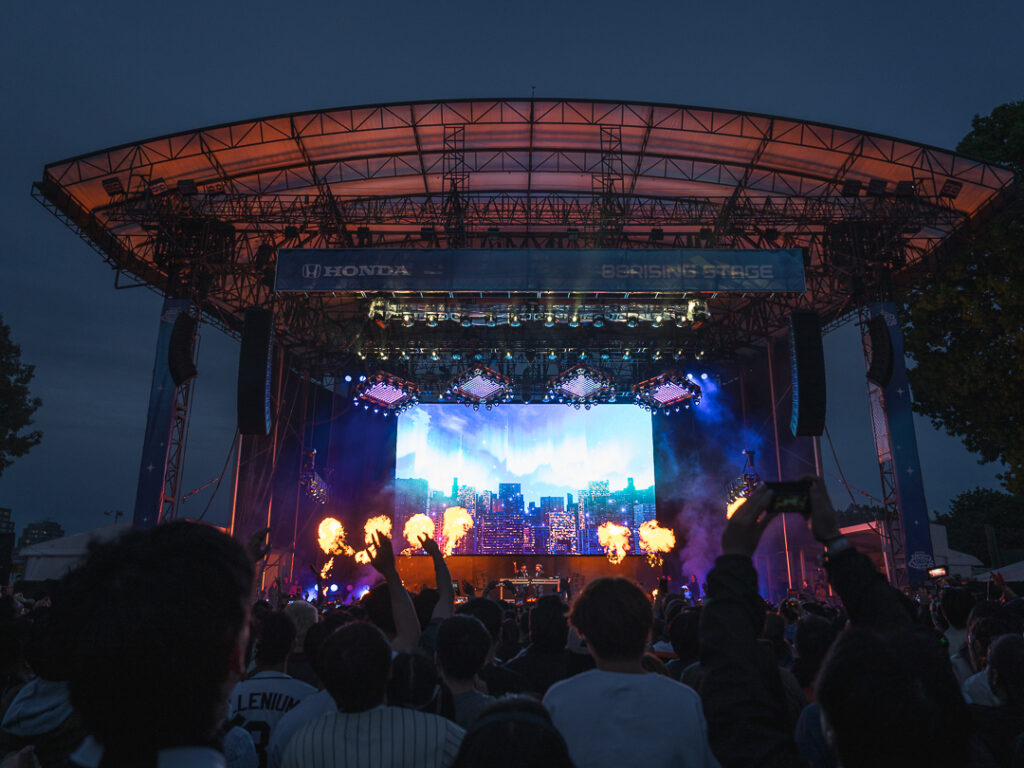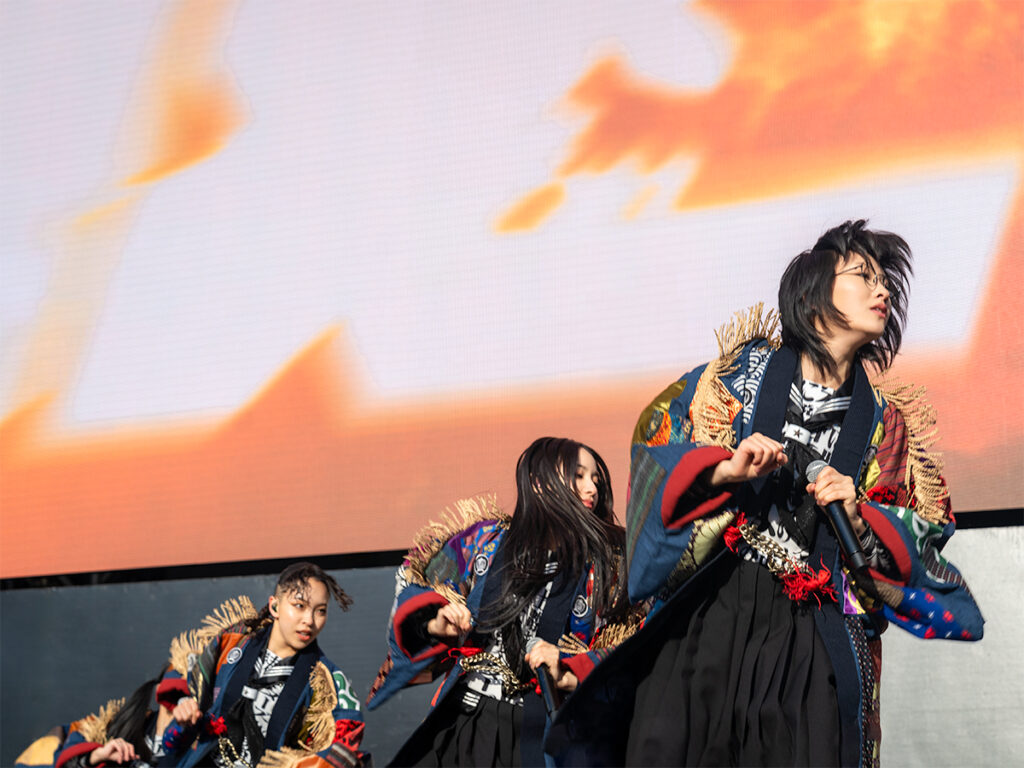The ULTIMATE Beginners Guide of Festival Photography Tips
May 26, 2024
Last Updated on March 9, 2025 by Erin Donahue
Capturing the energy and excitement of a music festival through your lens is an exhilarating experience for any photographer. However, as a beginner looking to break into the world of festival photography, securing a coveted photo pass can be a significant hurdle. While the process of obtaining a press pass for a regular concert and a festival share some similarities, there are key differences to be aware of. In this post, I’ll share some festival photography tips for beginners, helping you navigate the process of obtaining a press pass and making the most of this incredible opportunity.
Disclosure: Some links may be affiliate links. This means that I may earn a small commission if you decide to buy (at no additional cost to you).

Festival Photography Tips To Get Started
Join A Publication
Unlike a typical concert where freelance photographers have a better chance to get approved independently, it’s a requirement to be part of a publication for festivals. Unless you’re a renowned photographer or part of an artist’s in-house team, the festival’s organizers will reject individuals not affiliated with a media outlet. This requirement stems from the larger scale and higher demand for press passes at festivals compared to regular concerts. Think about why this is the case. As a freelance photographer, what value do you bring to the musician and festival? Artists are protective of their likeness but are looking to widen their exposure which is usually only something that a form of media can bring.
Publications started with traditional media like magazines, but now include digital mediums like blogs. In my experience, joining a publication is the easiest route because they are always looking for photographers. Bonus points if you like to write! As long as you have some sort of portfolio put together it should be relatively easy to find one to join. If you’re wondering where to find a publication, look around in different Facebook groups. Do note: a lot of the time you will be shooting for free in exchange for the media pass and entry ticket.

Requesting A Media Pass
Many times, requesting a media pass for a festival is an application form on the festival’s website. However, smaller festivals can be requested directly by the agency managing the festival. One of the most important festival photography tips, when you reach out to a publicist, is to be professional and personalize the email. You’d be surprised at how many “concert photographers” send a transactional copy-and-paste template without even greeting the receiver by name. Think about it. Publicists receive hundreds of emails every day. If you received such an email would you acknowledge it? No! You’d probably ignore it. This is a super easy way to stand out. If you’re not sure what to say in your email, I’ve put together a free press request template you can download and use.
Do’s & Don’ts of Festival Photography
When you finally secure your first photo pass there are also a couple of festival photography tips do’s & don’ts that you need to be aware of. This is pretty standard across the board.
- Absolutely no flash is allowed. Leave it at home. Imagine being the person trying to blind the talent!
- There is a 3-song rule to be in the photo pit before security kicks you out.
- Get crowd shots after leaving the pit. Many times you can hang around and actually enjoy the show afterward. If you have coordinated with your friends to meet you there, I would suggest you put your camera away and take off your photo pass so in case you get lit you’re not being perceived as unprofessional.
- When you’ve picked up your photo pass and ticket at will-call, don’t take pictures of your media pass. This is for security reasons.
- If you’re not sure what to wear, it’s simple. Wear black or dark colors – this is to avoid distracting the artists if you’re moving around in the photo pit. Be sure to wear comfortable shoes!
Read any legal documents before signing!
Something to be aware of, and a key difference between a regular concert and a festival, is that you might receive a media release form to sign. As it’s a legal document be sure to read it over before signing! Since running my own business, I’ve come to realize a lot of people just blindly sign contracts. You might think there’s no value in the pictures you take, especially if you’re in a mindset of “you’re just getting started, it’s just a hobby, or you’re not getting paid for this.” Clearly, there’s value because why are there so many instances of copyright theft in the creative world? To be fair, it’s not personal. Usually, it’s a template that’s sent out, but people don’t realize they can push back and redline.

Festival Photography Camera Gear & Settings
Photographing festivals can be challenging because the lighting changes all day and is extremely fast-paced. What I like about festivals is that there are multiple artists so there are multiple opportunities to photograph throughout the day. Maybe the first act you might be nervous since you don’t know what to expect, but after the second or third act of the day, you’ve loosened up.
For camera settings, it varies because if you’re there from day to night the lighting is completely different. Not only that, are you trying to freeze the motion with a higher shutter speed, or do you want to experimental and incorporate the motion with a slower shutter speed? During the earlier sets in the daytime, I will use an ND filter. For sets at night, I’ll switch to a star-filter.
As for actual camera gear, I keep it simple. I share in this article what camera gear I typically bring with me in a lot of situations, but for concert and festival photography, I actually bring the least amount. I just have my camera stuffed in a cross-body bag, the star filter, and my wallet!

Watch on YouTube
To keep up to date with everything I share, follow along on my social media!
Leave a Reply Cancel reply
is the creative studio of Erin Donahue, offering photography, videography, and content creation services for brands, hotels, tourism boards, and publications.
Based in New York City, but available globally, this multi-disciplinary digital creative left a career in the hedge fund space to pursue her passion as a travel and brand photographer, creating imagery that resonates with audiences. She approaches every project with a focus on storytelling, producing visuals that engage and inspire.
Her work has been commissioned by brands like Sony, Apple, and Google, and the content she has created has reached millions across social media.
To keep up to date with everything she shares, follow along on social media and read up on what camera gear she uses to capture the shot.
Niredonahue
© Erin Donahue Creative LLC, All Rights Reserved
Terms of Service & Privacy Policy